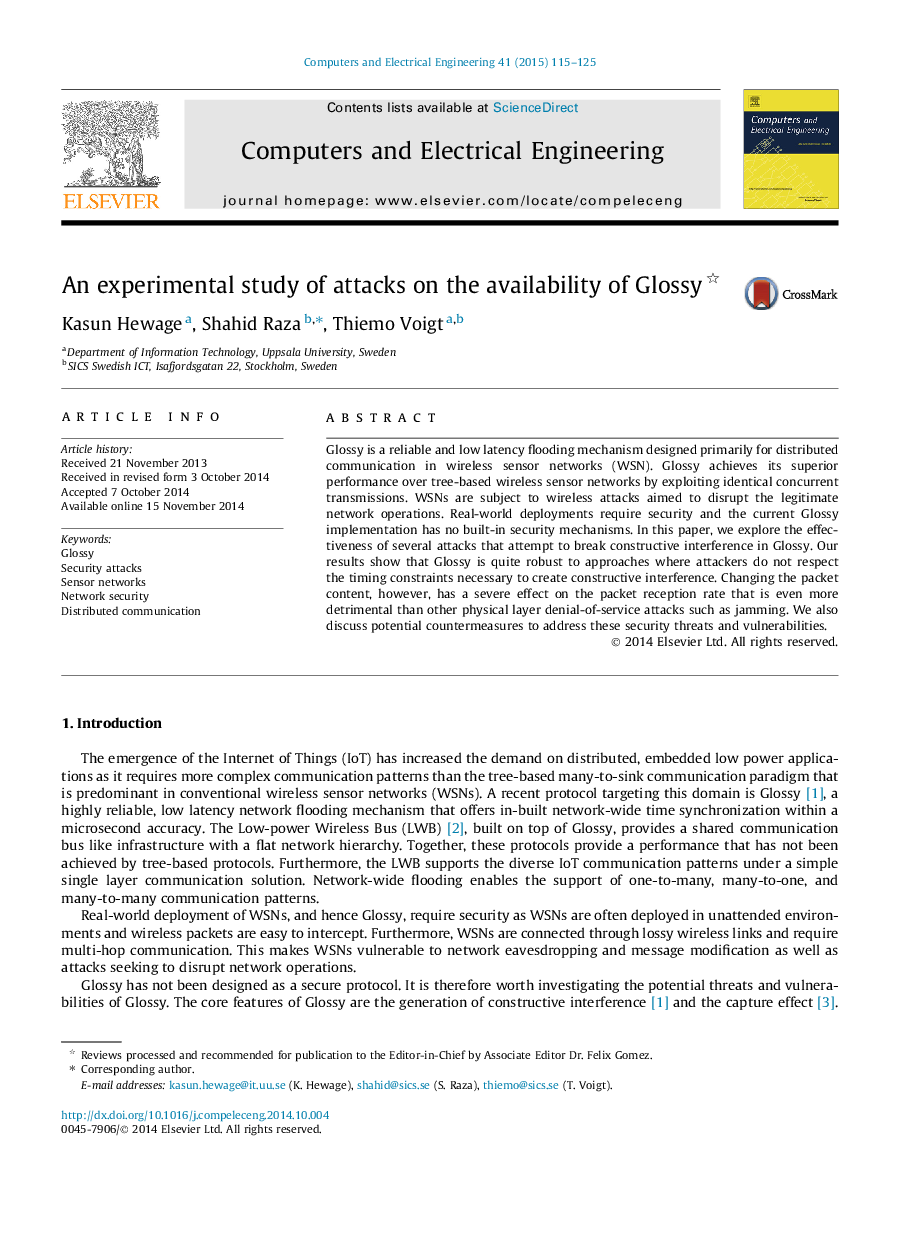| Article ID | Journal | Published Year | Pages | File Type |
|---|---|---|---|---|
| 455298 | Computers & Electrical Engineering | 2015 | 11 Pages |
•Presentation of novel attacks aiming to break Glossy's constructive interference.•Results showing Glossy’s robustness except for attacks on relay counter.•Discussion of potential security solutions to protect Glossy-based networks.
Glossy is a reliable and low latency flooding mechanism designed primarily for distributed communication in wireless sensor networks (WSN). Glossy achieves its superior performance over tree-based wireless sensor networks by exploiting identical concurrent transmissions. WSNs are subject to wireless attacks aimed to disrupt the legitimate network operations. Real-world deployments require security and the current Glossy implementation has no built-in security mechanisms. In this paper, we explore the effectiveness of several attacks that attempt to break constructive interference in Glossy. Our results show that Glossy is quite robust to approaches where attackers do not respect the timing constraints necessary to create constructive interference. Changing the packet content, however, has a severe effect on the packet reception rate that is even more detrimental than other physical layer denial-of-service attacks such as jamming. We also discuss potential countermeasures to address these security threats and vulnerabilities.
Graphical abstractFigure optionsDownload full-size imageDownload as PowerPoint slide
